
OBJECTIVE OF CLAIM: Collect the majority of the cards in at least three factions to win the game
NUMBER OF PLAYERS: 2 players
CONTENTS: 52 cards, 2 reference cards, Instructions
TYPE OF GAME: Trick Taking Card Game
AUDIENCE: Ages 10+
INTRODUCTION OF CLAIM
Claim is a trick taking card game for two players based on German Whist. The deck is composed of five different factions (suits), and the game is played over two phases. During the first phase, players are recruiting cards which will be used in the second phase. Cards collected during the second phase are used for scoring. Players want to collect the majority of the cards for each faction during that second phase. Some factions have special powers that can be used during the game. The player with the most cards in at least three of the factions at the end of the game wins.
CONTENTS
The 52 card deck is composed of 5 factions: Goblins, Knights, Undead, Dwarves, & Doppelgangers. There are two player reference cards as well as an instruction sheet.
There are 14 Goblins number 0 – 9. The Goblin faction has five 0’s. The Dwarves, Undead and Doppelganger factions each have 10 cards number 0 – 9. There are 8 Knights number 2 – 9.

SETUP
Shuffle all of the cards and deal 13 to each player. Place the rest of the deck face down and turn the top card over so both players can see it. The winner of the first trick will win this card.

THE PLAY
Claim is played in two phases: recruit and gather.
RECRUIT
During the recruit phase, each player is collecting cards that will be used during the second phase. For each trick, one card from the deck is turned up.
For the first trick, the younger player leads. They may play any card from their hand. The following player must follow suit if they can. If the player cannot follow suit, they may play any card they choose.
The highest card in the suit that is led wins the trick. The trick-winner collects that card and places it face down in front of them to begin their Follower pile. The trick-loser draws the top card of the deck. That card is placed face down to begin their Follower pile. The cards in the trick are removed from play for the rest of the game.
The next card of the deck is turned face up. The winner of the previous trick now leads. Play like this continues until each player has no more cards in hand. At this point, there will be thirteen cards in each players’ Follower pile, and phase two can begin.
GATHER
Each player picks up their pile of Followers. This forms their hand for the second phase. The winner of phase one’s last trick leads first. They may lead with any card from their hand. The following player must follow suit if they can. If not, they may play any card. The highest card in the suit that is led wins the trick. That player collects both cards and places them face up in their Score pile.
The trick-winner leads the next trick, and play continues until both players’ hands are empty. This signals the end of the game.
CARD AND FACTION POWERS
Some factions have special powers that affect the game.
Goblins – This faction has no special powers.
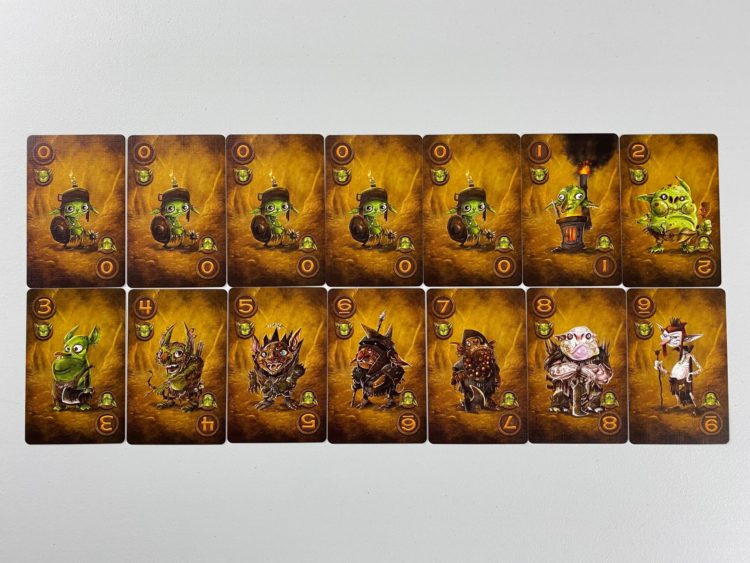
Knights – When a Goblin leads the trick, a Knight will always beat it. The player must still follow suit if they can before playing a Knight.
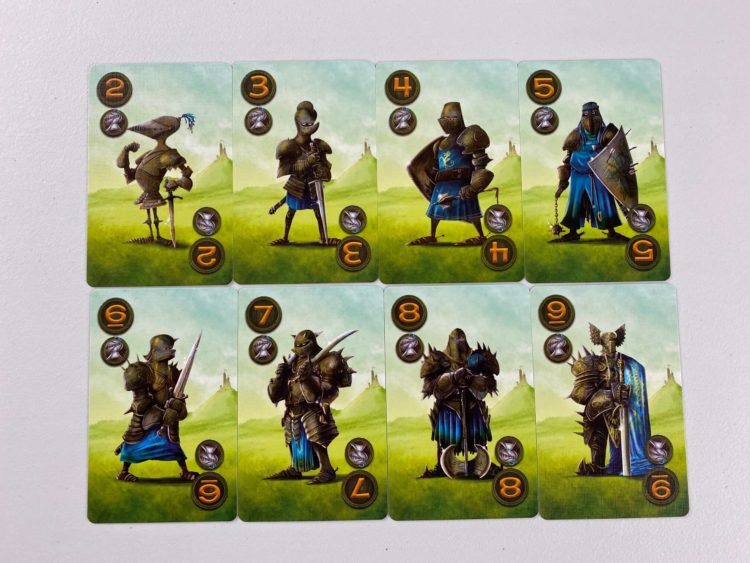
Undead – During the first phase, the trick-winner collects any Undead cards played and adds them to their Score pile instead of discarding them. They will contribute to that player’s score.
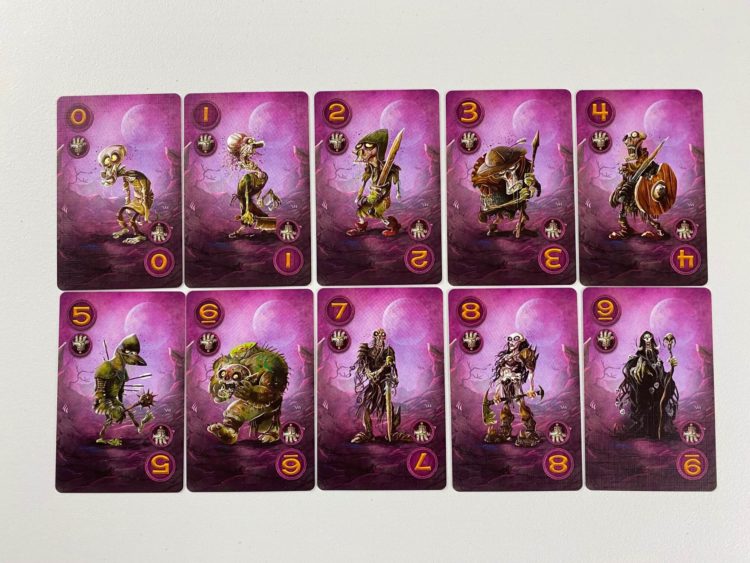
Dwarves – During the second phase, the trick-loser collects any Dwarves played to the trick and places them in their Score pile.
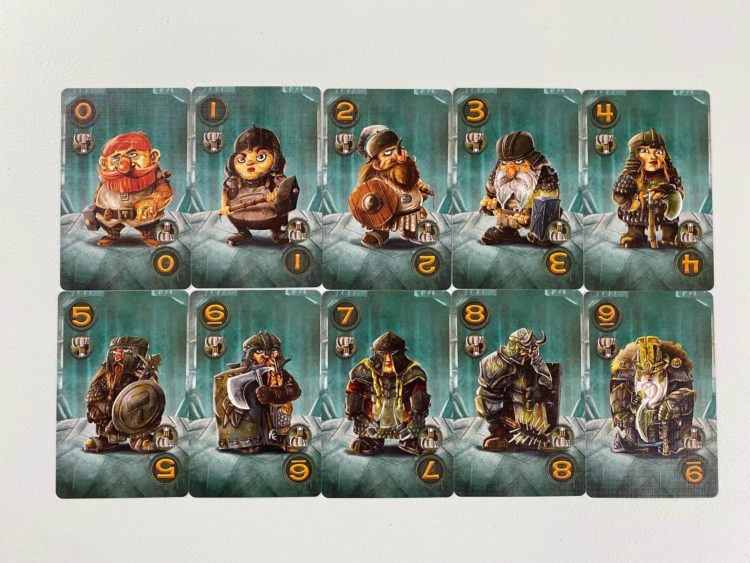
Doppelgangers – Cards in this faction are wild, and they can be played anytime regardless of whether the player can follow suit or not. When played second to the trick, the Doppelganger becomes the lead faction, but it does not adopt any card powers that faction has. If a Doppelganger leads the trick, the following player must follow suit and play a Doppelganger if they can.
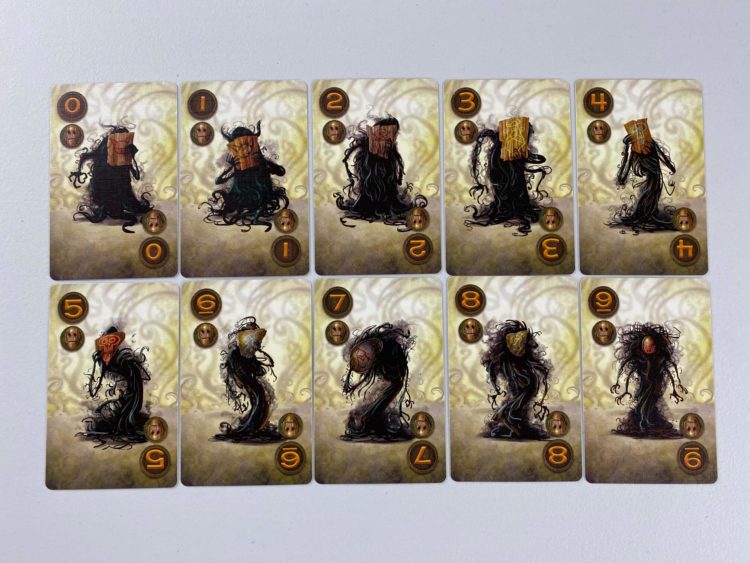
SCORING
At the end of the second phase, each player looks through their Score pile and counts the number of cards they’ve collected for each faction. Whoever has the most cards from a faction wins a point. If there is a tie, the player with the highest ranking card in that faction wins the point.
WINNING
The player with three points or more wins the game.
- TRIPLE SNAKES - February 15, 2021